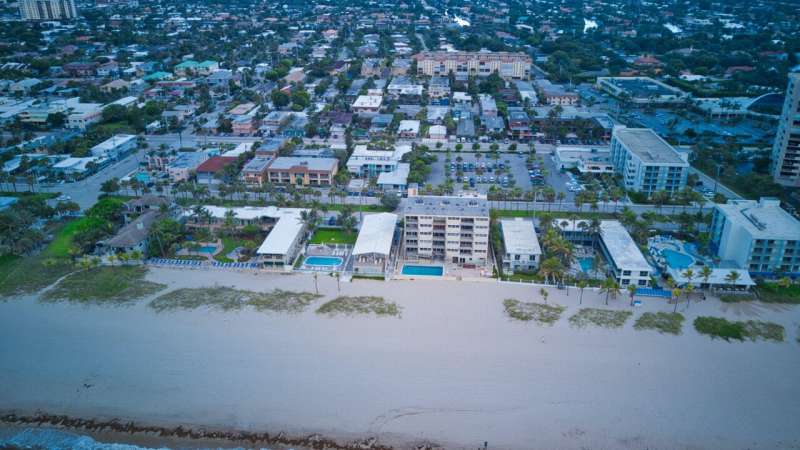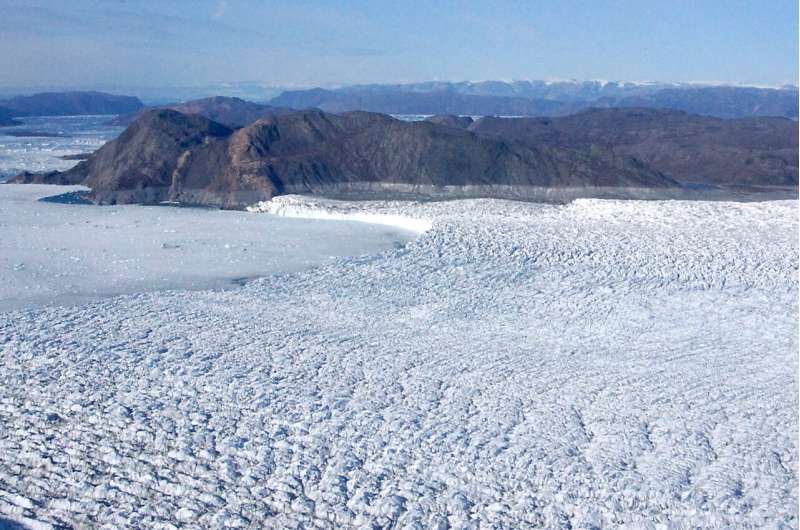The budget is closed: Individual contributors to global sea-level rise match up

Global mean sea-level has risen by more than 3 centimeters per decade since precise satellite measurements began in the 1990s. A good third of this rise is due to thermal expansion of the warming ocean. Nearly two thirds are due to water masses added to the ocean, mainly through melting of glaciers and the two ice sheets in Greenland and Antarctica. The melting has increased since the 1990-s, thereby speeding up sea-level rise. Another addition of water to the ocean results from a decrease of water storage on land, mainly due to groundwater depletion caused by human water abstractions.
Scientists test their understanding of sea-level-change processes by comparing the observed sea-level change with the sum of assessed contributions, that is, by assessing the sea-level budget. Ocean mass change can be determined from the sum of individual contributions: from the Greenland Ice Sheet, the Antarctic Ice Sheet, the glaciers worldwide and changes in land water storage. Alternatively, it can be measured directly by satellites that observe tiny changes of Earth's gravitational pull entailed by regional changes of ice or water masses.
The Climate Change Initiative (CCI) of ESA has generated high-quality and continuous space-based records of Essential Climate Variables (ECV) climate variables, including a number of variables related to sea level. The 'CCI Sea Level Budget Closure' project conducted by a consortium of ten European research institutions has now assessed these CCI ECV records jointly with respect to the sea-level budget. For this purpose, the project advanced and extended the analysis of data from earth observation satellites as well as from oceanographic measurements and numerical modeling.
Background on measurement methods and model calculations
Ocean water density changes, and hence its thermal expansion, were assessed by a new combination of measurements of the Argo network of ocean profiling floats with CCI sea surface temperature records. Estimates of Greenland Ice Sheet and Antarctic Ice Sheet mass changes were derived from ice surface elevation changes measured by four different ESA satellite missions. This required innovative methods to convert the ice-sheet volume change to mass change by accounting for the variable snow and ice densities involved. Glacier mass changes were assessed by a global glacier model supported by satellite data. Land water storage changes were assessed by a global hydrological model enhanced by an improved representation of groundwater withdrawal, among other improvements.
Averaged over the period fro 1993 to 2016, the mean rate of measured global mean sea-level rise was of 3.0 millimeters per year (mm/year). The thermal expansion effect is assessed at 1.1 mm/year (38% of the total rise), while the addition of water masses is assessed as 1.7 mm/year (57%). The mass component includes 0.6 mm/year (21% of total sea-level rise) from glaciers outside Greenland and Antarctica, 0.6 mm/year (20%) from Greenland, 0.2 mm/year (6%) from Antarctica, and 0.3 mm/year (10%) from changes of land water storage. In the more recent sub-period from 2003 to 2016, sea-level rise was 3.6 mm/year, higher than in the full period. This is due to an increase of the mass contributions, now about 2.4 mm/year (66% of the rise), with the largest increase contributed from Greenland, while the contribution from thermal expansion remained similar at 1.2 mm/year (now 33%). These results are in line with previous studies. They gain additional confidence through the advancements of data analysis involved. The advancements include the consistent approach to specifying the accuracy limits throughout all elements of the budget. These add up to about 10% of the total sea-level rise. This accuracy is the margin within which a mismatch between the sum of the parts and the whole may be expected. Indeed, the mismatch is consistent with those margins.

The results call for further improvements in understanding the satellite measurements and the physical processes in question. For example, slow deformations of the solid Earth beneath the ocean affect satellite observations. These effects need to be separated from changes within the ocean itself and they are currently an important source of the remaining uncertainty in the sea-level budget.
Martin Horwath (Technische Universität Dresden), science lead of the study, summarizes that "Assembling this coherent picture of sea-level and ocean-mass budgets not only required advanced datasets from satellite earth observation and modeling. It also required the experts from various disciplines to arrive at a common framework." He adds that "part of our results went into the recent Sixth Assessment Report of the IPCC. Now we provide the full set of time series and their documentation."
Jérôme Benveniste (ESA/ESRIN) who initiated and supervised the study, adds that "this is a fruit of the continuity in research and development on Earth observation data analysis enabled by ESA's Climate Change Initiative. The beauty of the results lies in the coherence of all the CCI Essential Climate Variables, which, when well-prepared and assembled, give a precise picture of our climate and its trend. The work doesn't stop at this impressive milestone, there are still questions to be answered regarding the climate variability and its evolution."
Benjamin Gutknecht (Technische Universität Dresden), project scientist, specifies that "it was also important for to show that results change to some extent when methods are updated. New approaches in how we account for mass displacements in the solid Earth have led to an improved understanding of how reliable the results for ocean-mass change really are. More research is needed to further separate the different processes of mass transports in the Earth system."
Petra Döll (Goethe Universität Frankfurt), consortium member responsible for the assessment of land-water contributions concludes that "global land water storage fluctuates seasonally and from year to year, and this translates to short-term ups and downs of sea level-level by several millimeters. In the long run, however, land water storage has decreased over the last decades and has thereby aggravated sea-level rise."
The research was published in Earth System Science Data.
More information: Martin Horwath et al, Global sea-level budget and ocean-mass budget, with a focus on advanced data products and uncertainty characterisation, Earth System Science Data (2022). DOI: 10.5194/essd-14-411-2022
Provided by Dresden University of Technology




















